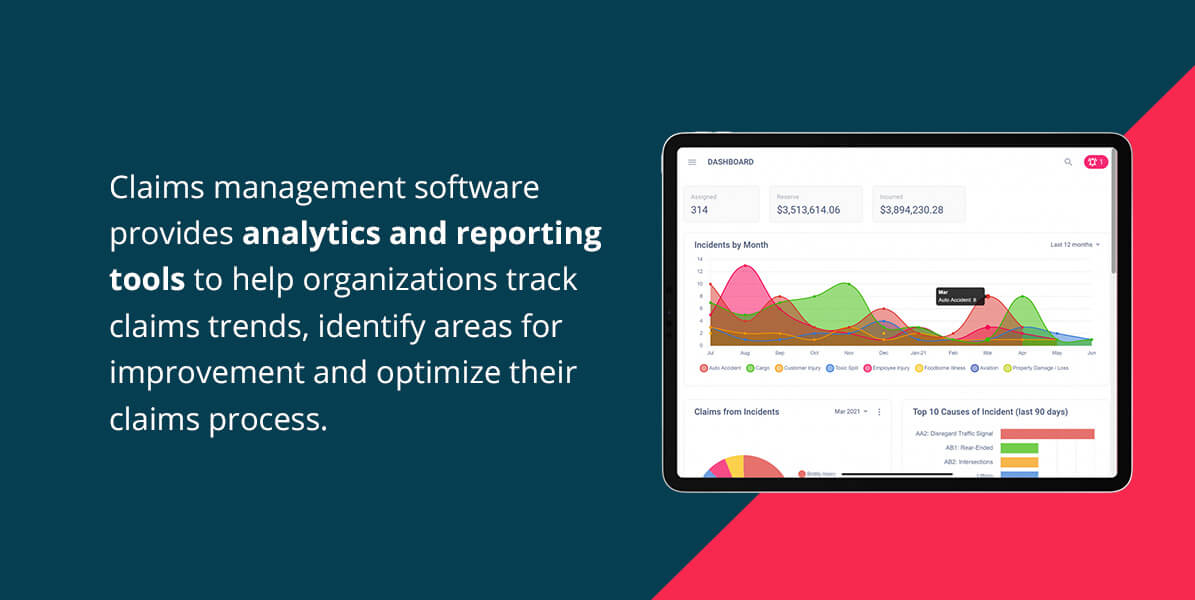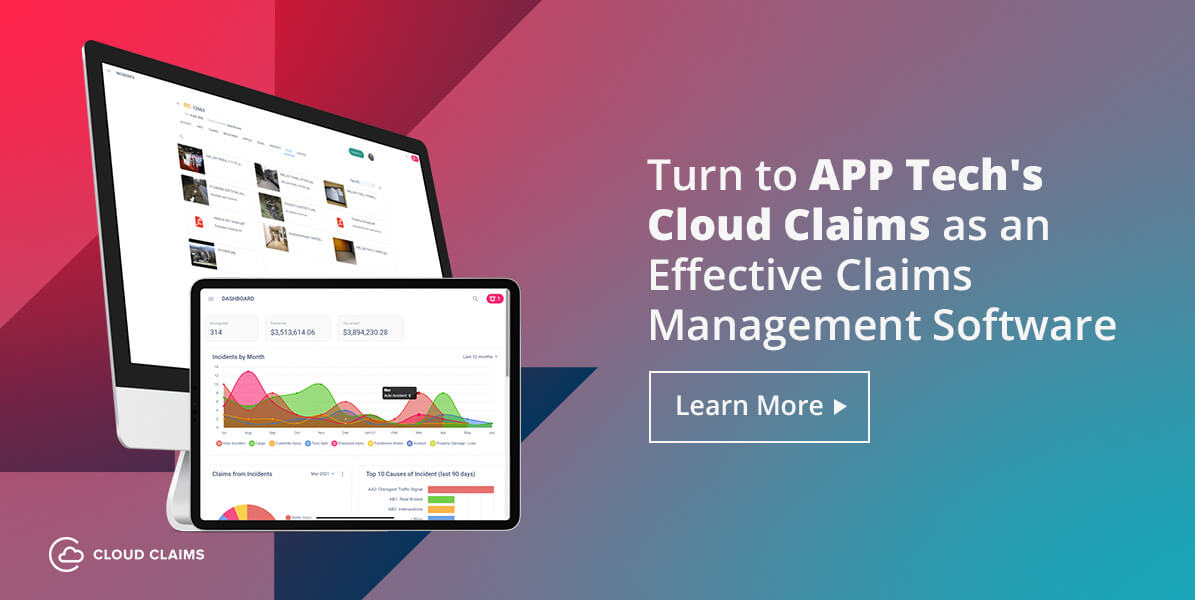Choosing the right claims management software can be a crucial decision for businesses that deal with a high volume of claims. With so many options available on the market, it can be challenging to identify the software that meets your specific needs.
Below, we will explore some key factors to consider when selecting claim management software. With this information, you will have a better understanding of how to choose a claim management system that can help you streamline your claims processing workflows and achieve your business goals.
What Is Claims Management Software?
Claims management software is a type of software used by self-insured organizations, insured companies looking to reduce insurance costs, insurance companies including third-party administrators, and other organizations to manage the claims process. A claims management system helps automate and streamline the claims management process by providing a centralized platform for tracking and processing claims.
Claims management software typically includes features such as claim intake, data entry, claim adjudication, payment processing, task tracking with reminders, reporting and analytics. It can also include features like compliance tracking and communication tools for interacting with policyholders or claimants.
The use of claims management software can help reduce errors and inefficiencies in the claims process, improve communication between parties and ultimately result in faster and more accurate claims processing.
How to a Choose Claims Management Software Solution
Choosing the right claims management software can be a critical decision for businesses that deal with a high volume of claims. Here are some factors to consider when selecting claims management software:
- Functionality: Look for a software solution that offers the features you need for your specific industry and type of claims. Consider whether the software can handle different types of claims, including claims related to property damage, liability and workers’ compensation.
- Integration: Ensure the software can integrate with your existing systems and workflows, such as your CRM, accounting or billing software.
- User interface: Look for a software solution that has a user-friendly interface your staff can navigate easily. The software should also offer customization options to meet your specific needs.
- Security: Security is critical when handling sensitive information like claims data. Look for software that offers high levels of security and data protection measures, such as encryption and multi-factor authentication.
- Support: Ensure the software provider offers reliable and responsive customer support, including technical assistance and training resources.
- Cost: Evaluate the pricing structure of the software solution, including any additional fees for support, customization or updates. Consider whether the software provides a good return on investment for your business.
By considering these factors, you can find claims management software that meets your specific needs and helps you streamline your claims processing workflows.
How to Choose a Management Software for Handling Property and Casualty Claims
Selecting the right management software for handling property and casualty claims requires careful consideration of various factors. Here is a step-by-step guide to help you make an informed decision:
- Identify your specific needs: Begin by understanding your organization’s requirements for property and casualty claims management. Consider the size of your organization, the volume of claims you handle and the specific features and functionalities you require.
- Research available software options: Conduct thorough research to identify software solutions that specialize in property and casualty claims management. Look for reputable vendors, read customer reviews and assess their industry reputation and track record.
- Define key features and functionalities: Make a list of essential features and functionalities you need in the software. Some common features to consider include claims intake, data management, policy integration, workflow automation, reporting and analytics.
- Evaluate user-friendliness: Usability is crucial for effective software implementation. Look for an intuitive and user-friendly interface that will streamline the claims management process and minimize the learning curve for your staff.
- Consider integration capabilities: Assess the software’s ability to integrate with other systems or platforms your organization uses, such as accounting software, CRM systems or policy management systems. Seamless integration can enhance efficiency and data accuracy.
- Check for scalability and flexibility: Ensure the software can scale and adapt to your organization’s growth and evolving needs. It should be flexible enough to accommodate changing regulatory requirements and support customization according to your workflows.
- Review security measures: Because property and casualty claims involve sensitive data, security is paramount. Evaluate the software’s security protocols, encryption methods, user access controls and compliance with data protection regulations like HIPAA, depending on your location and industry.
- Assess customer support and training: Look for a vendor that offers reliable customer support, including technical assistance, software updates and training resources. Adequate training and ongoing support will help your team maximize the software’s potential.
- Request demos and trials: Contact shortlisted vendors to request live demos or trial periods of their software. This will allow you to evaluate the software firsthand, explore its features and assess its suitability for your organization.
- Consider cost and ROI: Evaluate the software’s pricing structure, including upfront costs, licensing fees and ongoing maintenance charges. Compare the costs with the potential return on investment (ROI) the software can deliver in terms of increased efficiency, reduced claim cycle times and improved customer satisfaction.
- Seek feedback and references: Reach out to other organizations in the insurance industry, industry associations or professional networks to gather feedback on the software you are considering. Hearing from existing users can provide valuable insights into the software’s performance and reliability.
- Make an informed decision: After considering all the above factors, weigh the pros and cons of each software option. Select the management software that aligns most closely with your organization’s needs, offers the best value for your money and has a strong reputation for reliability and customer satisfaction.
Remember that choosing the right software is not a one-size-fits-all approach. The software should be tailored to your organization’s unique requirements, workflows and long-term strategic goals.
Choosing a Management Software for Workers’ Compensation Claims
When selecting management software for workers’ compensation claims, it is important to consider specific factors that cater to the unique requirements of handling workers’ compensation claims. Here are the steps to help you choose the right software:
- Assess your organization’s needs: Understand your organization’s specific needs regarding workers’ compensation claims management. Consider factors such as claim volume, compliance requirements, integration with medical providers and reporting capabilities.
- Research software options: Look for software solutions that specialize in workers’ compensation claims management. Research reputable vendors and explore their software offerings.
- Identify essential features: Make a list of features and functionalities that are crucial for workers’ compensation claims management. This may include claim intake, medical provider network management, bill review, case management, compliance management, reporting and analytics, return-to-work programs and communication tools.
- Evaluate user-friendliness: Choose software with an intuitive and user-friendly interface. It should be easy for your staff to navigate and utilize the software efficiently, reducing the learning curve and increasing productivity.
- Consider integration capabilities: Assess the software’s ability to integrate with other systems or platforms that your organization uses, such as payroll systems, medical billing systems or HR software. If your organization works closely with medical providers, consider software that allows seamless integration with medical networks. This integration can simplify the process of managing medical bills, treatment authorizations and communication with healthcare providers.
- Review compliance features: Workers’ compensation claims management involves compliance with specific regulations and reporting requirements, e.g., MMSEA Section 111. Ensure the software can handle regulatory compliance tasks such as generating necessary reports, tracking deadlines and maintaining audit trails.
- Assess security measures: Workers’ compensation claims contain sensitive and personal information. Verify that the software vendor has robust security measures in place, including data encryption, access controls and compliance with industry standards such as HIPAA.
- Seek references and feedback: Connect with other organizations or industry professionals who have used the software for workers’ compensation claims management.
By following these steps, you can select a management software for workers’ compensation claims that aligns with your organization’s needs, enhances efficiency, ensures compliance and provides a positive user experience.
APP Tech’s Incident-Based Claim Management Innovation
We realized that an incident-based approach created a more natural flow of data, mirroring what happens in the real world. It reduced redundant data entry and gears the system for strong risk management capabilities, which is the ideal blend of claims and risk management capability for self-insured organizations, captives, and risk pools. Here are some valuable capabilities enabled with our incident-based claims management software:
- Incident report intake: The software provides a platform for receiving and recording incident information from customers, field personnel or other employees.
- Workflow automation: By automating responses to events of interest such as incident-creation, policy changes, and billing updates, our incident-based claims management software can alert stakeholders at key moments in the claims process, e.g., send incident notification before a claim is filed to mitigate loss.
- Claims tracking with context: The software tracks the typical progress of claims and provides real-time updates on their status, while providing the facility to record additional context of the incident to optimize claim resolution and spot trends to avoid future similar incidents.
- Reporting and analytics: Our incident-based claims management software provides analytics and reporting tools to help organizations track claims trends, identify areas for improvement and optimize their claims process.
- Integration with other systems: The software can integrate with other systems, such as CRM or data visualization software, to provide insight on potential mitigative measures.
- Document management: The software provides a centralized repository for storing and managing incident-related documents, such as photos, and reports to provide additional context that may be helpful in preventing a claim from being filed.
By using incident-based claims management software, organizations are enabled to intervene with context in the earliest segment of the claims submission process to prevent a claim from being submitted and to identify trends and markers to prevent similar future events.
Why Use Claims Management Software
There are several reasons you should consider using claims management software to manage your company’s claims processing workflows. Here are some of the main benefits of using claims management software:
- Improved efficiency: Claims management software automates many of the manual processes involved in processing claims, reducing errors and improving efficiency. This helps your business save time and money and process claims accurately and quickly.
- Better communication: Claims management software includes communication tools that help your business collaborate with internal stakeholders and communicate with customers, agents or adjusters. This helps your business keep customers informed about your claim’s progress and address any questions or concerns they may have.
- Analytics and reporting: Claims management software provides analytics and reporting tools to help your business track claims trends, identify areas for improvement and optimize your claims process.
- Compliance management: Claims management software helps ensure that your business complies with regulatory requirements and best practices in claims management.
Benefits of Cloud Claims From APP Tech
Cloud Claims is an incident-based claims management software developed by us at APP Tech. Some of the benefits of using Cloud Claims include:
- Flexibility: Cloud Claims is a cloud-based software, meaning users can access it from anywhere with an internet connection. This makes it ideal if your business has remote teams or multiple locations.
- Cost-effective: Cloud Claims eliminates the need for expensive hardware and IT resources. You pay only for the features you need and can easily scale up or down as your business’s goals change.
- Streamlined workflows: Our software automates many of the manual processes involved in processing claims, allowing your organization to streamline your workflows and reduce errors.
- Customizable: You can customize the software to meet the specific needs of your organization, including customized workflows, forms and reports.
- Real-time data: Cloud Claims provides real-time access to claims data, allowing organizations to make informed decisions and respond quickly to changing circumstances.
- Enhanced security: Cloud Claims uses industry-standard security protocols to protect sensitive data from unauthorized access, ensuring the security of the claims process.
- Improved customer experience: Our software provides a streamlined claims process that can improve the customer experience by reducing wait times and improving communication.
- Lower operational costs: Software that does not require expensive developers to maintain it comes with more affordable operational costs. Cloud Claims comes with lower operational costs and provides a platform that can update regularly to accommodate additional data collection and processing.
- Streamlined user interface: Software with a simplified and streamlined user interface offers the advantages of reducing errors made during claim processing and expediting the overall claim resolution process.
- Reduce risk: If you are looking to reduce risk, consider software solutions that enable you to mitigate claims by offering a resolution before a claim is submitted.
Cloud Claims offers many benefits for organizations that need to manage claims efficiently, effectively and securely.
Turn to APP Tech’s Cloud Claims as an Effective Claims Management Software
APP Tech’s Cloud Claims is an incident-based claims management software that offers numerous benefits to businesses dealing with a high volume of incidents and claims. Cloud Claims is a reliable, secure and customizable solution for your business to manage your claims processing efficiently and effectively.
With its user-friendly interface, integration capabilities and cost-effectiveness, Cloud Claims is a great choice for your business if you are looking to streamline your claims processing workflows. Additionally, if you are interested in taking advantage of an incident-based approach to claims management, consider Cloud Claims.
To learn more about Cloud Claims and incident-based claim management, contact us at APP Tech today.









